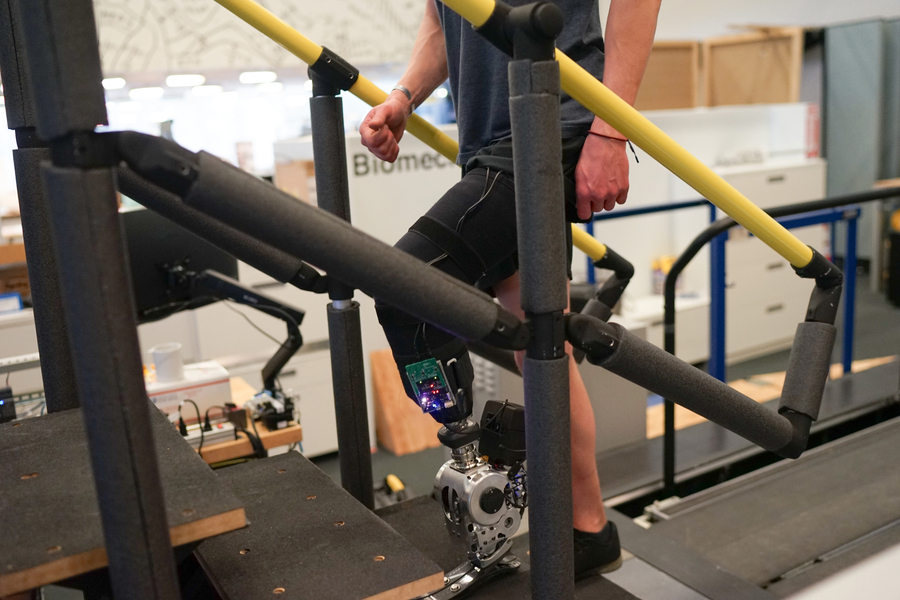In a world where most advanced robots are locked behind corporate doors, a French company is taking a radically different approach. Pollen Robotics has unveiled Reachy 2, a human-like robot that anyone can program, modify, and teach new skills. Think of it as the "Linux of robots" – free for everyone to use and improve.
A Robot That Learns Like a Human
What makes Reachy 2 special isn't just its human-like arms or its ability to move around on wheels. It's how it learns. Instead of complex programming, people can teach Reachy new skills by showing it what to do using virtual reality (VR) headsets.
"Imagine teaching a robot to arrange cups on a tray the same way you'd show a new employee," explains Matthieu Lapeyre, CEO of Pollen Robotics. "That's what we've made possible with Reachy 2."
From VR to Reality
The learning process is surprisingly simple:
- A human puts on a VR headset and controls the robot remotely
- The robot records these movements and actions
- Advanced AI studies these recordings to learn the task
- After thousands of practice runs, Reachy can perform the task on its own
In testing, it took Reachy 40,000 practice attempts to learn how to pick up an apple and hand it to someone. After 60,000 tries, it mastered the more complex task of arranging cups on a tray. While that might sound like a lot of practice, it's actually quite impressive for a robot learning from scratch.
Built for Real Work
Reachy 2 isn't just a laboratory experiment. Each of its arms can lift up to 3 kilograms (about as heavy as a large bag of flour) and moves with the same flexibility as a human arm. You can buy it with one or two arms, and either on wheels or as a stationary unit, depending on what you need it for.
The robot has already found homes in some impressive places:
- Research labs at Cornell University
- AI development at Hugging Face
- Innovation centers at Accenture
- Scientific institutions across France
Why Open Source Matters
Most advanced robots are like locked boxes – you can use them, but you can't look inside to see how they work or make changes. Reachy 2 is different. Everything about it is open source, meaning anyone can:
- Study how it works
- Make improvements to its design
- Share their modifications with others
- Create new applications
"We're proud to offer the only modular, open-source humanoid robotics solution capable of meeting today's market requirements," says Lapeyre. This approach has helped Pollen Robotics sell over 100 robots across 20 countries.
Teaching Through Technology
One of the most exciting things about Reachy 2 is how it bridges the gap between humans and machines. Using VR controllers, someone can literally reach through the robot's eyes and guide its hands. This makes teaching new tasks intuitive – if you can do something yourself, you can show Reachy how to do it too.
The Brain Behind the Robot
Reachy 2 runs on ROS2 Foxy (a popular robotics operating system) and can be programmed using Python, one of the world's most popular programming languages. This means students and researchers don't need to learn specialized programming languages to work with it.
The robot also comes with advanced AI capabilities, thanks to a partnership with Hugging Face, a leading AI company. This means Reachy can learn from experience and adapt to new situations, rather than just following rigid programming.
Looking to the Future
As robots become more common in our daily lives, the importance of accessible, understandable robotics platforms grows. Reachy 2 represents a future where advanced robotics isn't just for big tech companies – it's for everyone.
The next challenge? Teaching robots to work in our messy, unpredictable world. "Object manipulation in the real world is the next frontier," says the Pollen Robotics team. "Truly useful robots need to learn how to grasp and use objects from our everyday environments – the office, our homes, a hospital, a shop."
With its open-source approach and intuitive learning system, Reachy 2 might just be the platform that helps us get there. And the best part? When someone figures out how to make it better, everyone can benefit from that knowledge.


















